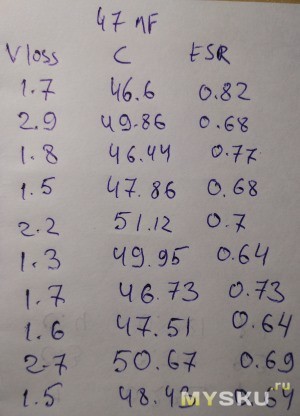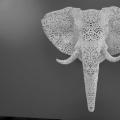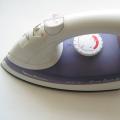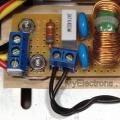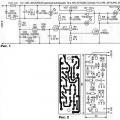An electrolytic capacitor is a necessary thing in the household of a radio amateur. It often turns out that there is no much-needed small penny detail on hand - because of such nonsense, you have to go to the store. In order to avoid such a situation, I decided to get such a box.
The box itself is sold in this store - - costs $ 2.2 So our eastern neighbor poured us a bunch of capacitors for $ 3. Very good price for 200 capacitors. In the end, the contents can be given away (thrown out, disassembled for educational purposes, weaved beads, etc.) - and put something in a box of 15 cells.
Everything came up suddenly in 2 weeks.
Photo of the package (was in the film)
Dimensions: 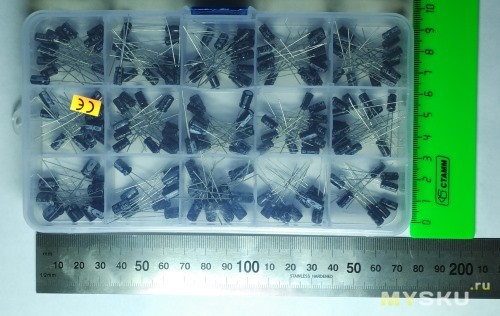
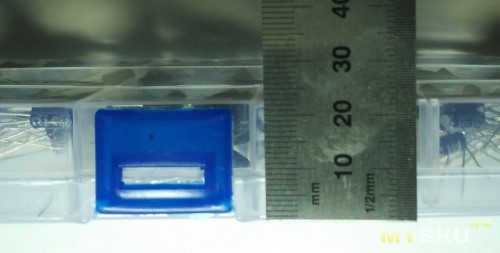
There is a hanger for a nail :-) 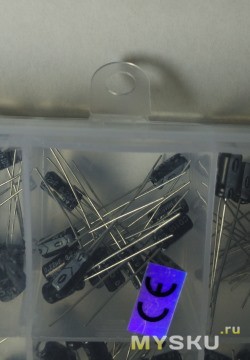
The box contains 200 electrolytic capacitors of the following ratings: 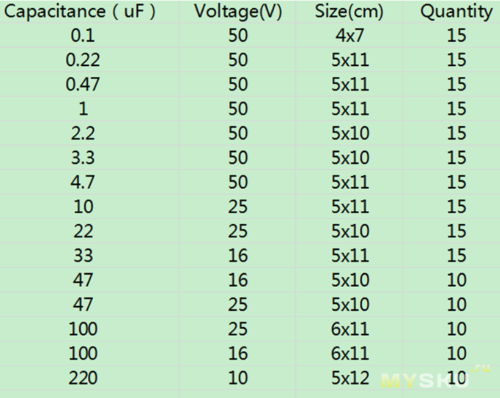
From transportation, the capacitors in the box almost did not mix. In order not to get confused, I signed the denominations (why the seller does not do this himself is not clear) 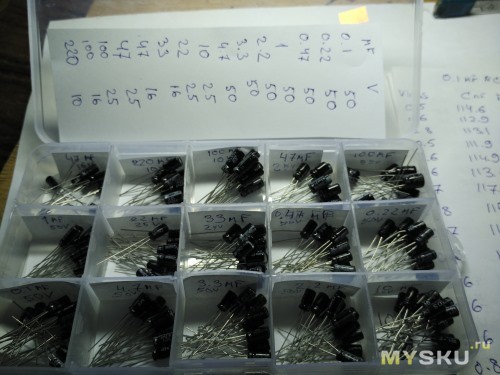
Measurements of capacitors were carried out by a popular tester here (version in a box) 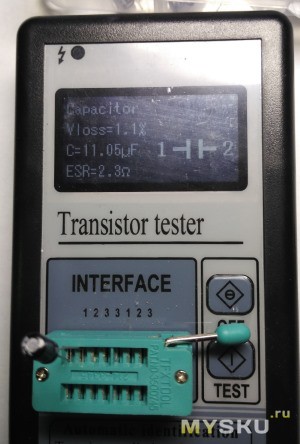
The device measures capacitance, ESR, Vloss. With capacity, everything is more or less clear.
Description of Vloss stolen from here -:
... it indirectly indicates the leakage level of the capacitor. As you know, a real capacitor has a dielectric resistance between the plates. Due to this resistance, the capacitor is slowly discharged due to the so-called leakage current.Those. if it is less than 5%, then everything is ok.So, when a capacitor is charged with a short current pulse, the voltage on its plates reaches a certain level. But as soon as the charge on the capacitor stops, the voltage across the charged capacitor drops by a very small amount. The difference between the maximum voltage across the capacitor and that observed after charging is complete and is expressed as Vloss. For convenience, Vloss is expressed as a percentage.
About ESR (ESR) - Equivalent series resistance (equivalent series resistance) - here you can read about the parameter and method of measurement -.
Determine according to the table: 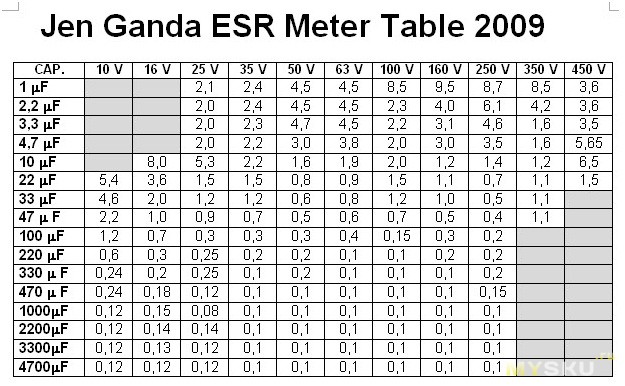
For small containers up to 5 ohms. If it is much more than the nominal value of the table, then it is better to throw out such a Conder.
Patient # 1
0.1μF; 50V; 4x7 mm; 15 pieces; NCK Firm 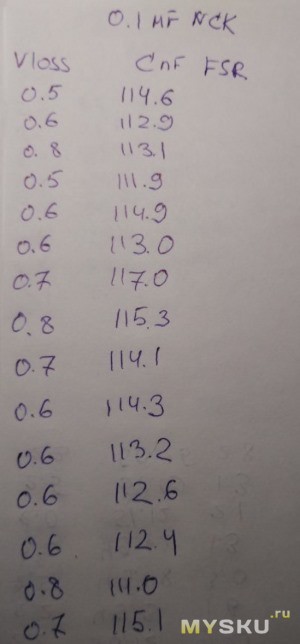
Patient # 2
0.22 μF; 50 V; 15 pieces; 5x11 mm; Chang firm ![]()
ESR should be 5. Here, most likely, the device does not know how to measure normally on small containers.
Patient 3
0.47 μF; 50 V; 15 pieces; 5x11 mm; Chang firm 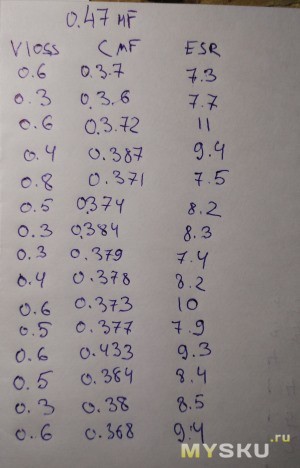
ESR should be 5. Here, most likely, the device does not know how to measure normally on small containers.
Patient 4
1 μF; 50 V; 15 pieces; 5x11 mm; Chang firm 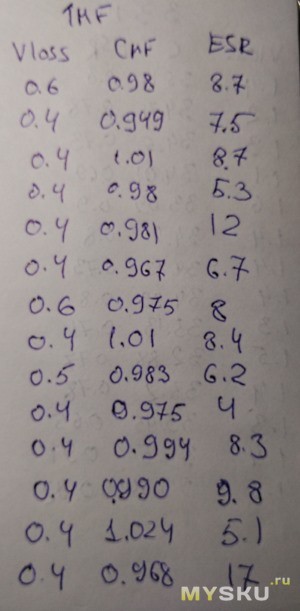
ESR according to the table should be 4.5. Here, most likely, the device does not know how to measure normally on small containers
Patient 5
2.2 μF; 50 V; 15 pieces; 5x10 mm; Chang firm 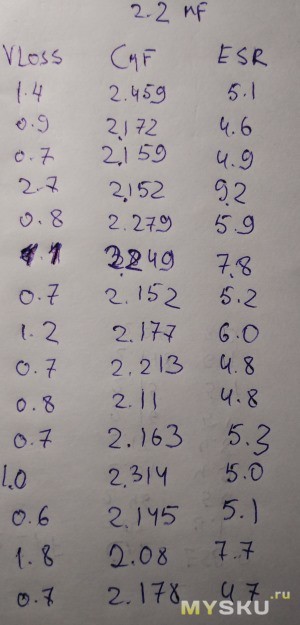
ESR according to the table should be 4.5 Here, most likely, the device does not know how to measure normally on small containers
Patient 6
3.3 μF; 50 V; 15 pieces; 5x10 mm; Chang firm 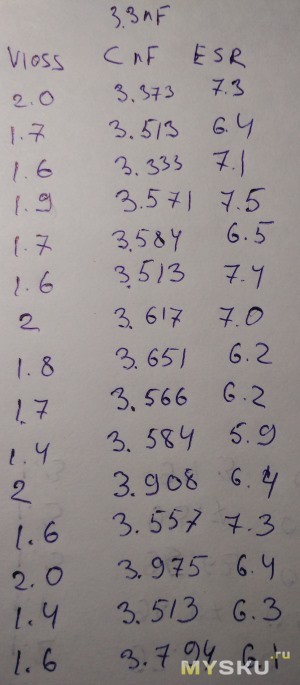
ESR according to the table should be 4.7 Here, most likely, the device does not know how to measure normally on small containers
Patient 7
4.7 μF; 50 V; 15 pieces; 5x11 mm; Chang firm 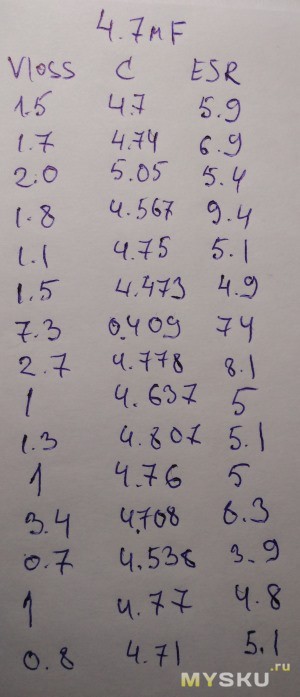
ESR according to the table should be 3.0 Here, most likely, the device does not know how to measure normally on small containers
Patient 8
10 μF; 25V; 15 pieces; 5x11 mm; Chang firm 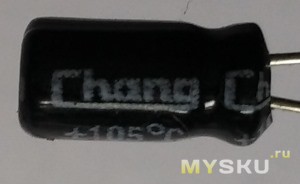
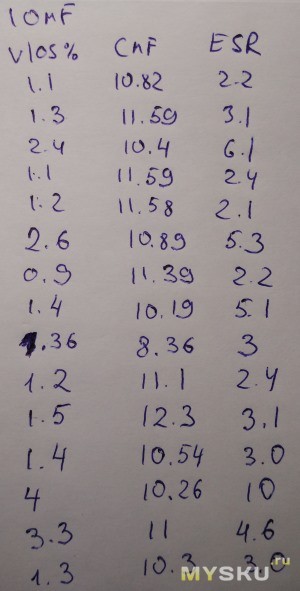
ESR according to the table should be 5.3 Here everything is ok with ESR
Patient 9
22 μF; 25V; 15 pieces; 5x10 mm; Chang firm 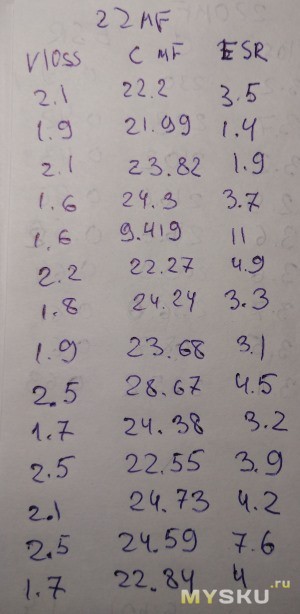
Something, judging by the table, is typical here with ESR
Patient 10
22 μF; 16V; 15 pieces; 5x11 mm; Chang firm 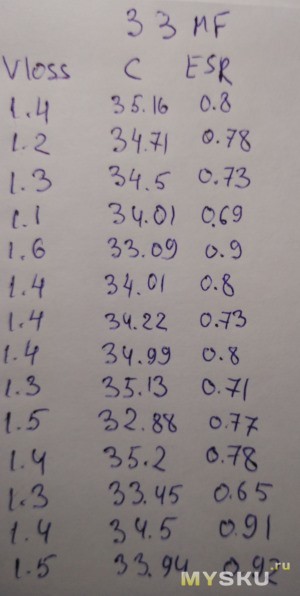
ESR according to the table should be 3.6 Here with ESR everything is ok
Patient 11
47 μF; 16V; 10 pieces; 5x10 mm; Jackcon firm 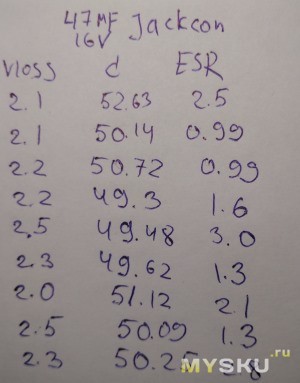
According to the table ESR should be about 1. You can see everything for yourself.
Patient 12
47 μF; 25V; 10 pieces; 5x10 mm; Chang firm 